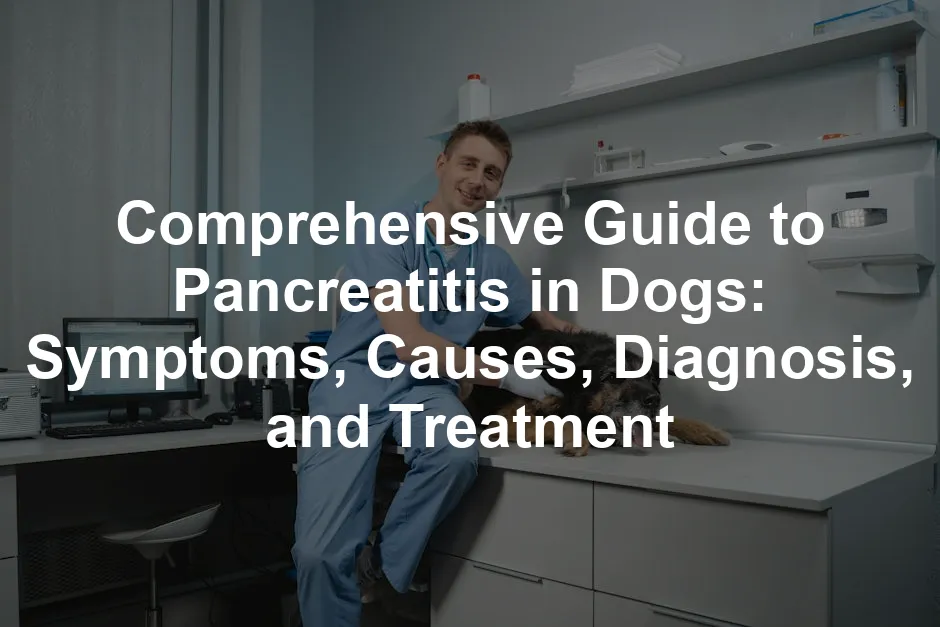Introduction
Pancreatitis in dogs is like that unexpected guest who shows up uninvited and overstays their welcome. This sneaky condition can strike at any time, leaving pet owners scrambling for answers. As a dog lover, understanding what pancreatitis is and how it can affect your furry friend is crucial. From the symptoms to look out for to the treatment options available, this guide will cover everything you need to know.
Imagine your dog suddenly refusing their favorite treats! It’s enough to raise alarm bells. Pancreatitis can cause digestive woes, abdominal pain, and lethargy. Being aware of these signs is essential for every dog owner.
But what causes this condition? While the exact reason often remains a mystery, certain factors can increase the risk. High-fat diets, obesity, and even some medications can trigger episodes. It’s a bit like walking a tightrope; one wrong move, and your pup could face a health crisis. Speaking of diets, consider switching to a low-fat option like Royal Canin Veterinary Diet Canine Gastrointestinal Low Fat Dry Dog Food. It’s formulated to support digestive health and can be a game changer for dogs with pancreatitis.
Diagnosis typically involves a combination of physical exams, blood tests, and imaging techniques like ultrasounds. It’s vital to act quickly, as prompt attention can make a world of difference in recovery.
Treatment varies based on the severity of the condition. Some dogs may require hospitalization and intravenous fluids, while others can recover at home with a careful diet and medication. For at-home care, consider investing in a reliable automatic dog feeder like the PetSafe Healthy Pet Simply Feed Automatic Dog Feeder. It ensures your pup gets their meals on time, helping to maintain a consistent feeding schedule.
By the end of this article, you’ll be equipped with the knowledge to recognize, manage, and hopefully prevent pancreatitis in your beloved canine companion. Whether you’re a concerned pet parent or simply looking to educate yourself on canine health, this article will provide valuable insights into this serious yet often misunderstood condition.

Key Points Summary
– Definition: Pancreatitis is an inflammation of the pancreas, which can cause severe digestive issues and pain in dogs.
– Types: There are two main forms of pancreatitis in dogs: acute and chronic, each with distinct symptoms and treatment approaches.
– Symptoms: Common signs include vomiting, abdominal pain, lethargy, and loss of appetite. In severe cases, dogs may display a “praying position” due to discomfort.
– Causes: While the exact cause is often unknown, factors like high-fat diets, obesity, and certain medications can trigger pancreatitis.
– Diagnosis: Diagnosis typically involves a combination of physical examinations, blood tests, and imaging techniques like ultrasounds.
– Treatment: Treatment ranges from hospitalization and intravenous fluids for severe cases to dietary management and medication for milder cases.
– Prognosis: With prompt treatment, many dogs recover fully, but some may experience recurrent episodes or long-term complications like diabetes.
– Prevention: Preventative measures include maintaining a healthy diet, avoiding table scraps, and regular vet check-ups.
Understanding these key points will give you a solid foundation for recognizing and addressing this condition. Remember, staying informed can help you keep your furry friend happy and healthy!
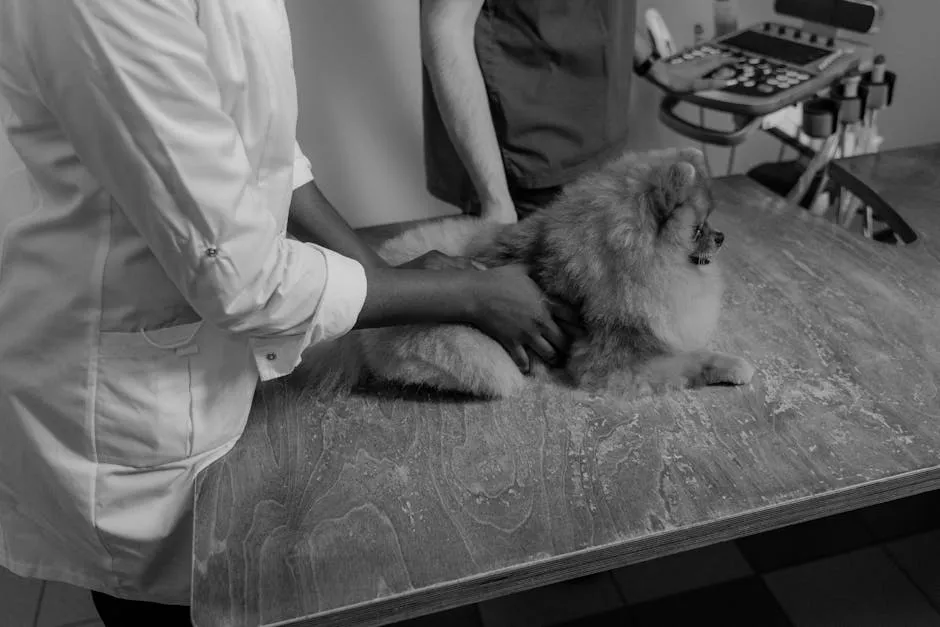
Understanding Pancreatitis
What is Pancreatitis?
Pancreatitis is the inflammation of the pancreas, a crucial organ in your dog’s body. Located near the stomach, the pancreas plays a dual role: it produces digestive enzymes and hormones like insulin. These enzymes help break down food, while insulin regulates blood sugar levels.
In a healthy pancreas, enzymes are produced in an inactive form. However, in pancreatitis, these enzymes activate too early, causing the pancreas to start digesting itself. This self-digestion leads to swelling, pain, and potential damage to nearby organs. Symptoms can range from mild discomfort to severe abdominal pain, making it essential for pet owners to recognize the signs.
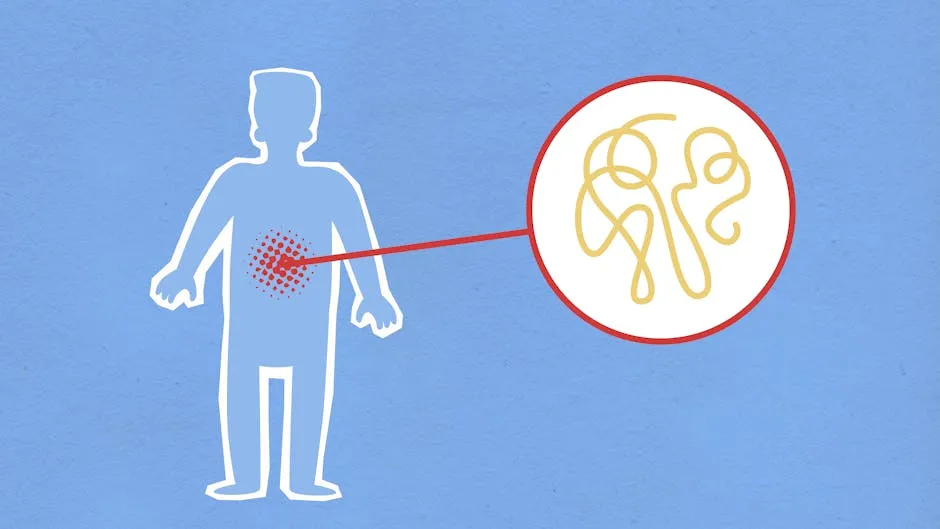
Types of Pancreatitis
Pancreatitis is classified into two types: acute and chronic.
Acute Pancreatitis occurs suddenly and is often severe, with symptoms appearing abruptly. Your furry friend might experience intense abdominal pain, vomiting, and lethargy. This type can lead to life-threatening complications if not treated promptly.
On the flip side, Chronic Pancreatitis is a long-term condition that develops gradually. Dogs with chronic pancreatitis may show milder symptoms, like intermittent vomiting or a decreased appetite. However, this type can lead to recurrent episodes and serious health issues over time. The long-term effects can include diabetes or exocrine pancreatic insufficiency (EPI), where the pancreas fails to produce enough digestive enzymes.
Recognizing these two types of pancreatitis is crucial for early intervention and treatment. The sooner you act, the better the chances of a full recovery for your beloved pooch.

Symptoms of Pancreatitis in Dogs
Common Symptoms
When it comes to pancreatitis, your dog may display various signs, including:
- Vomiting: This can occur repeatedly, sometimes accompanied by bile.
- Diarrhea: Look for greasy stools that may indicate fat malabsorption.
- Abdominal Pain: Your dog may show signs of discomfort when you touch their belly, or they might adopt a hunched posture.
- Lethargy: A sudden drop in energy levels is a common indicator.
- Decreased Appetite: Your pup may refuse food or show less interest in treats.
Behavioral changes are also noteworthy. A dog suffering from pancreatitis might seem more withdrawn and less playful than usual. This lack of enthusiasm can be a telltale sign that something is amiss. To keep your pup entertained, consider a fun toy like the Outward Hound Hide-A-Squirrel Puzzle Dog Toy. It can help distract them and make them feel better!

Severe Symptoms
In more severe cases, watch for symptoms like:
- Dehydration: Dogs may pant excessively or have sunken eyes.
- Shock: Signs include weakness, rapid heartbeat, and pale gums.
- Collapse: If your dog suddenly collapses, immediate veterinary care is vital.
- “Praying Position”: Dogs may position themselves with their front legs down and hindquarters up, trying to relieve abdominal pain.
If you notice any combination of these severe symptoms, it’s crucial to seek veterinary assistance immediately. Early detection and treatment can make all the difference in your dog’s recovery.
Causes of Pancreatitis in Dogs
Pancreatitis in dogs is a serious condition that can occur due to various factors. Understanding these causes is crucial for prevention and management.
Identified Risk Factors
One of the primary triggers of pancreatitis is a high-fat diet. Dogs that indulge in fatty foods, whether from their meals or sneaking leftovers, can experience a sudden onset of this painful condition. Dietary indiscretion, like rummaging through trash, can also lead to trouble. Imagine your furry friend feasting on a greasy burger! That’s a recipe for disaster. To avoid these pitfalls, consider a balanced diet like Blue Buffalo Life Protection Formula Adult Dog Food, which is designed to provide essential nutrients without the excess fat.
Obesity is another major risk factor. Overweight dogs are more likely to develop pancreatitis due to altered fat metabolism. Certain breeds, such as Miniature Schnauzers, are particularly predisposed to this condition. They might just be cute and cuddly, but they require careful dietary management!
Underlying health conditions are also culprits. Diabetes and hormonal disorders, such as hypothyroidism, can increase the risk of pancreatitis. These conditions can disrupt the normal function of the pancreas, leading to inflammation. If your dog has any of these issues, it’s essential to monitor their diet closely. For more information on managing canine diabetes, check out this article on Understanding and managing canine diabetes.

Idiopathic Cases
Now, let’s talk about the mystery of idiopathic pancreatitis. This term refers to cases where no specific cause can be identified. It’s like that annoying puzzle piece that just won’t fit! This unpredictability makes diagnosis and treatment challenging for veterinarians.
In many instances, idiopathic cases are frustrating because the usual triggers aren’t present. Despite thorough evaluations, some dogs still develop pancreatitis for unknown reasons. This unpredictability can leave pet owners scratching their heads, wondering what went wrong.
Veterinary professionals often rely on a combination of clinical signs and tests to diagnose these cases, but the lack of a clear cause can complicate the treatment process. It’s vital to stay vigilant and keep an eye on your dog’s health, especially if they belong to a breed with a predisposition to this condition.
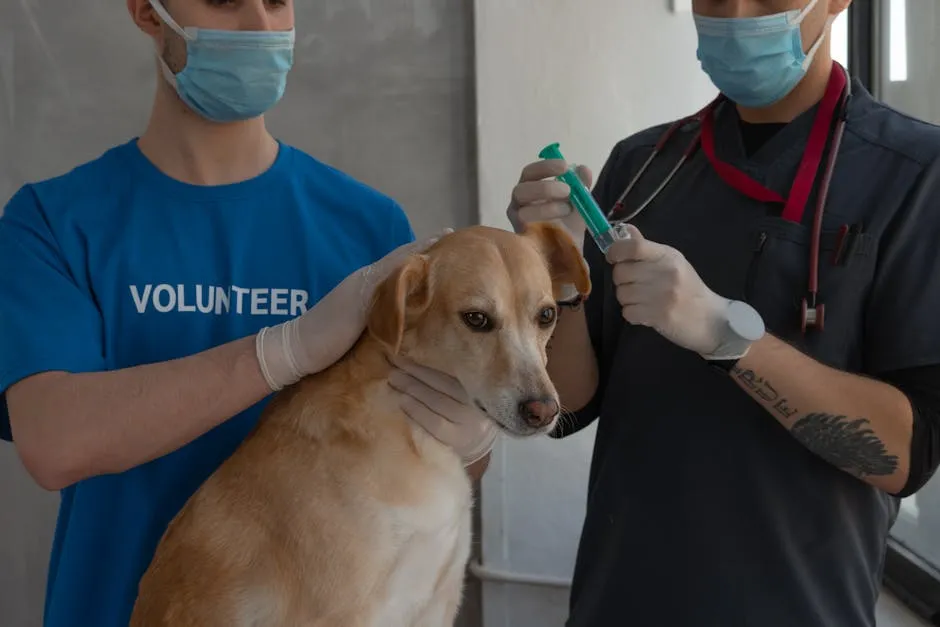
Diagnosis of Pancreatitis
Diagnosing pancreatitis in dogs involves a series of careful steps that help veterinarians pinpoint the issue.
Diagnostic Procedures
The first step in diagnosing pancreatitis is a thorough physical examination. Veterinarians will assess your dog’s overall condition, checking for signs of pain and discomfort. Your pet’s medical history also plays a vital role. Be ready to discuss any recent changes in diet, behavior, or health.
Blood tests are critical in identifying pancreatitis. These tests often measure specific pancreatic enzymes. One common test is the cPLI (canine pancreatic lipase immunoreactivity) test. This test helps detect abnormal levels of pancreatic enzymes, providing valuable information about your dog’s condition.
Imaging techniques are also essential. Ultrasound is often preferred for identifying inflammation in the pancreas. It can reveal swelling or fluid accumulation that indicates pancreatitis. X-rays can help rule out other conditions but are less definitive.
In some cases, veterinarians may recommend more invasive procedures, like a fine needle aspiration of the pancreas. However, this is typically reserved for severe cases where immediate intervention is necessary.
Early diagnosis is crucial. The sooner you identify the problem, the better the chances of a successful recovery for your furry companion. Prompt veterinary care can make all the difference in managing pancreatitis effectively.
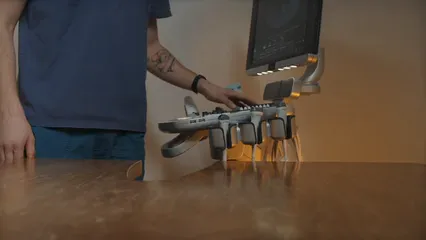
Treatment Options for Pancreatitis
Immediate Care
When your dog is diagnosed with pancreatitis, especially in severe cases, immediate care is essential. Hospitalization often becomes necessary. Your furry friend may require intravenous (IV) fluids to combat dehydration and maintain electrolyte balance. Think of it as a hydration station for your pup! This treatment helps support their fragile state and prevents further complications.
Pain management is another critical aspect of immediate care. Pancreatitis can be incredibly painful, leaving your dog feeling miserable. Veterinarians typically use analgesics to ease discomfort. Additionally, anti-nausea medications play a vital role in helping your dog feel better. If your pup is vomiting, these medications can make a world of difference. The goal during this phase is to stabilize your dog and keep them as comfortable as possible.

Dietary Management
Once your dog is stable, dietary management becomes key. During recovery, a low-fat, easily digestible diet is crucial. Think of it as a gentle reset for their digestive system! High-fat foods can trigger further inflammation, leading to a setback. Your veterinarian may recommend a prescription diet specifically formulated for dogs recovering from pancreatitis, like the Purina Pro Plan Veterinary Diets EN Gastroenteric Formula Dry Dog Food. It’s specially designed to support dogs with gastrointestinal issues.
Transitioning back to regular food should be approached with caution. Gradually reintroduce the normal diet, starting with small portions. Monitor your dog’s response closely. If vomiting or diarrhea occurs, it’s time to pull back and consult your vet. Remember, patience is vital here! Returning to a regular diet should be a gradual process, ensuring your pup’s tummy is ready for it.
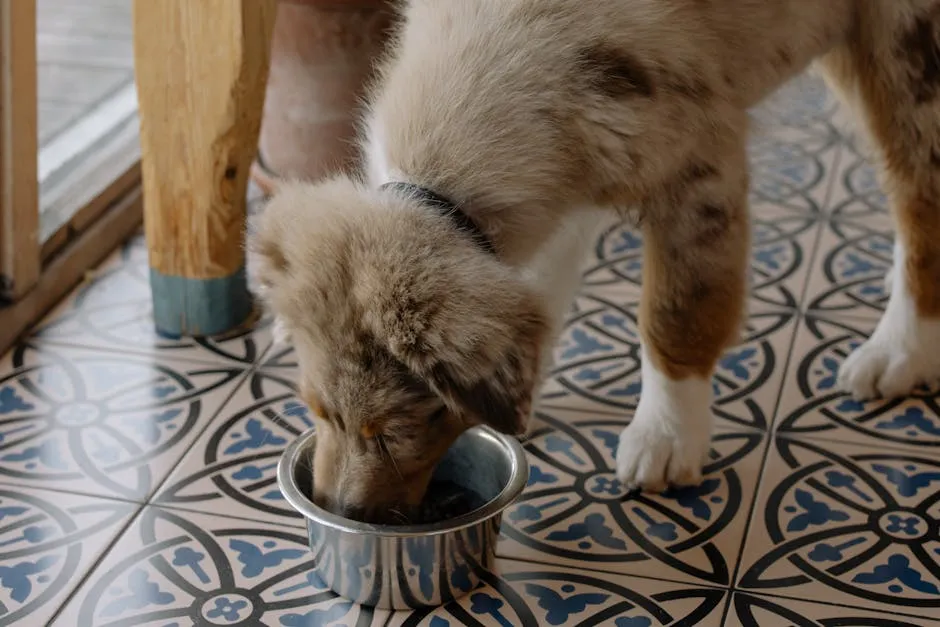
Long-Term Management
For dogs with chronic pancreatitis, effective long-term management is crucial. Home care strategies should focus on maintaining a low-fat diet and regular vet check-ups. Keeping your dog on a consistent feeding schedule can prevent flare-ups. Smaller, more frequent meals are often better tolerated than larger ones. This method helps avoid overwhelming their digestive system.
Ongoing dietary considerations are also essential. Avoid high-fat treats and table scraps. It might be tempting to share your food, but it’s best to stick to vet-approved snacks. Lifestyle changes can also help. Regular exercise and maintaining a healthy weight are vital in managing this condition. Obesity can exacerbate pancreatitis, so keeping your dog fit is a priority. To help with grooming and shedding, the Furminator deShedding Tool for Dogs is an excellent investment for keeping their coat healthy.
Incorporating these long-term strategies can lead to a better quality of life for your pup. With proper care and a watchful eye, many dogs with chronic pancreatitis can lead happy, active lives.

Prognosis and Long-Term Effects
Recovery Outlook
The recovery outlook for a dog with pancreatitis largely depends on the severity of the condition and how promptly treatment is administered. Mild cases often respond well to treatment, leading to a full recovery in a week or two. However, severe cases can complicate matters. Factors such as age, overall health, and the presence of concurrent diseases can significantly influence the prognosis.
For dogs that recover, ongoing monitoring is essential. While many dogs return to their normal selves, some may face long-term complications. Potential long-term issues include diabetes or exocrine pancreatic insufficiency (EPI). Diabetes can arise if the pancreas sustains significant damage. EPI occurs when the pancreas doesn’t produce enough digestive enzymes, leading to malnutrition.
It’s crucial to follow up with your veterinarian regularly to monitor your dog’s health post-recovery. They may recommend blood tests or other assessments to catch any complications early. With careful management, many dogs go on to live happy, healthy lives after an episode of pancreatitis.

Preventative Measures for Pancreatitis
Dietary Guidelines
Preventing pancreatitis in dogs starts with what goes into their bowls. Selecting appropriate foods is crucial. Opt for a low-fat, highly digestible diet specifically designed for canine health. This means steering clear of high-fat treats and table scraps. Yes, that means resisting those puppy-dog eyes when you’re munching on fries!
When choosing commercial dog food, look for options with less than 15% fat content. Lean meats like chicken and turkey are excellent protein sources. Avoid foods rich in fat, like pork, cheese, and table scraps. Remember, your dog’s digestive system isn’t built for high-fat indulgences. For a great option, try Zesty Paws Probiotic Bites for Dogs. They can help support digestive health and overall wellness!
Regular vet check-ups are equally important. Monitoring your dog’s weight helps prevent obesity, a significant risk factor for pancreatitis. Maintaining a healthy weight ensures your pup’s pancreas doesn’t have to work overtime. If your dog starts to pack on the pounds, consult your vet for a tailored diet plan. Just like us, dogs need balanced nutrition to thrive!
Lastly, keep an eye on your dog’s behavior. Changes in appetite or energy levels could signal underlying issues. Addressing concerns early can prevent complications down the line. A proactive approach goes a long way in ensuring your furry friend stays healthy and happy!

Conclusion
In conclusion, pancreatitis is a serious condition that requires immediate attention and a proactive approach to management. By understanding the signs, causes, and treatment options available, dog owners can better prepare themselves to handle this health issue. Regular veterinary visits, a healthy diet, and being mindful of changes in your dog’s behavior can go a long way in preventing pancreatitis. Always consult your veterinarian if you suspect your dog may be suffering from this condition to ensure the best possible care.
While some dogs may experience an episode of pancreatitis, others may face chronic issues. This condition can lead to complications like diabetes or exocrine pancreatic insufficiency (EPI). The good news is that with the right management, many dogs recover and return to their normal, playful selves.
Maintaining a low-fat diet is essential for dogs prone to pancreatitis. Offering safe, vet-approved treats and monitoring their weight will help keep your dog in tip-top shape. Remember, prevention is always easier than dealing with a health crisis! By staying vigilant and informed, you can ensure your furry friend leads a long, happy life.
If you have any concerns or questions about your dog’s health, don’t hesitate to reach out to your veterinarian. They’re your best ally in ensuring your canine companion stays healthy and well. After all, a happy dog means a happy owner!
FAQs
What should I do if I suspect my dog has pancreatitis?
Immediate veterinary consultation is essential.
Can pancreatitis be cured?
While acute cases can often be resolved, chronic pancreatitis requires ongoing management.
Is there a specific diet for dogs with pancreatitis?
Yes, a low-fat, highly digestible diet is crucial for managing the condition.
What breeds are most at risk for pancreatitis?
Breeds like Miniature Schnauzers, Cocker Spaniels, and Dachshunds are more susceptible.
How long does recovery from pancreatitis take?
Recovery time varies; mild cases may resolve in a week, while severe cases could take longer.
Please let us know what you think about our content by leaving a comment down below!
Thank you for reading till here 🙂
All images from Pexels

